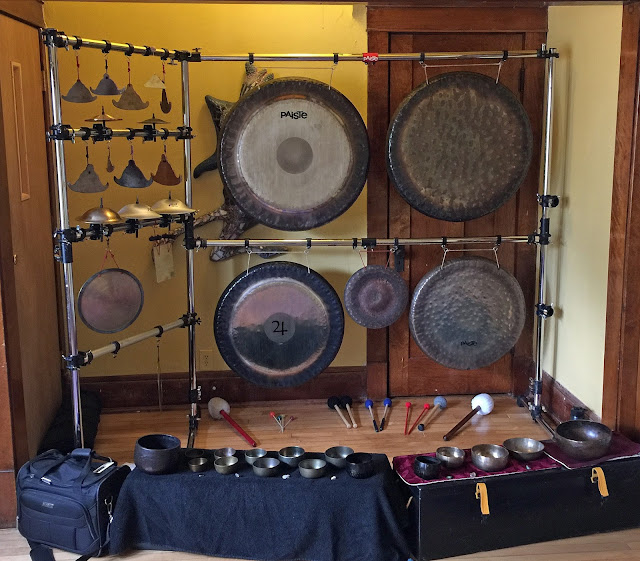It's A Gong World After All
I remember when I first started playing Gongs, other than Paiste, there wasn't much available. Zildjian made a few Turkish style ones. UFIP, in Italy, made some, but they were often difficult to find. And China was still an enemy of the USA, so real Chinese Gongs were practically nonexistent. For most Asian Gongs, you had to know someone who knew someone; or you had to know an Asian American who had connections back in the mother country. And if you were fortunate enough to live on the West Coast, where Asian immigrants imported a lot of musical instruments from their homelands; or to be a scholar/researcher/word traveler who could go to Asia, you could pick them up yourself.
40 years ago I was buying buying bells at Pier One stores, because they actually carried a nice selection of bells from India. Then World Market (before they became just a food/wine/furniture retailer) came around and they had drums, bells, Gongs, and ethnic percussion. I got some of my 1st Gongs from Carroll Sound in New York City back in 1974. They Suppled exotic percussion to all the studios and orchestras in NYC, as well as universities. I bought some Gongs from Thailand and Japan from them. The only Chinese Gongs they had were from Taiwan, not mainland China. Today you can buy Gongs just about everywhere. I've seen them at Target (yes, but just cheap tourist Gongs for decoration, but Gongs none the less) and Singing Bowls at the food co-op.
So now everybody has a Singing Bowl and/or a Gong, but they know little or nothing about them. It's nice if you can get a Ph.D. in ethnomusicality, or travel/live in the Orient, or just get to know the local Llama/Monk in your neighborhood/city so you can find out a few things about the instruments you have. But most people don't have those type of opportunities.
While nothing beats first hand knowledge, there is the internet. It is possible to do a lot of research, finding written, audio, and video, covering instruments and their uses, history and ethnic traditions, as well as modern applications. There are also books and recordings available. This all takes time and hard work—think of it as being a detective searching for clues and answers—but it's worth it.
Don't just play. Know.
~ MB
In the next post, we'll look at the role of tradition in all this.
40 years ago I was buying buying bells at Pier One stores, because they actually carried a nice selection of bells from India. Then World Market (before they became just a food/wine/furniture retailer) came around and they had drums, bells, Gongs, and ethnic percussion. I got some of my 1st Gongs from Carroll Sound in New York City back in 1974. They Suppled exotic percussion to all the studios and orchestras in NYC, as well as universities. I bought some Gongs from Thailand and Japan from them. The only Chinese Gongs they had were from Taiwan, not mainland China. Today you can buy Gongs just about everywhere. I've seen them at Target (yes, but just cheap tourist Gongs for decoration, but Gongs none the less) and Singing Bowls at the food co-op.
From Carroll Sound's catalog, early 1970s
So now everybody has a Singing Bowl and/or a Gong, but they know little or nothing about them. It's nice if you can get a Ph.D. in ethnomusicality, or travel/live in the Orient, or just get to know the local Llama/Monk in your neighborhood/city so you can find out a few things about the instruments you have. But most people don't have those type of opportunities.
While nothing beats first hand knowledge, there is the internet. It is possible to do a lot of research, finding written, audio, and video, covering instruments and their uses, history and ethnic traditions, as well as modern applications. There are also books and recordings available. This all takes time and hard work—think of it as being a detective searching for clues and answers—but it's worth it.
Don't just play. Know.
~ MB
In the next post, we'll look at the role of tradition in all this.
Chop Wood / Carry Water / Play Gongs™




Comments
Post a Comment